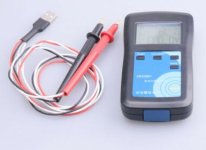Sparfuchs
1 kW
- Joined
- Nov 22, 2020
- Messages
- 305
Hallo EV friends,
I'm about to build a 14s28p battery pack with "reclaimed" (sellers definition of reclaimed below) 21700 samsung 50e cells.
my main question is if there is a "best" cell combination order to consider by knowing the internal resistance and the voltage of each cell if they aren't all the same ?
Should I take the time to charge all the cells with a bigger difference than 0,1v to the voltage level of the others or is there a easier way like just combining the similar cells in the same parallel group ? If so, is there a order to start with ? Like first a group starting from negative bus with 28 parallel cells with 3,44v then 28 with 3,45v and so on or maybe exactly the opposite order ?
And do I have to consider the internal resistance somehow ?
I bought 400 of this cells but had the last 8 months no time to do build the pack so it they might self discharge a bit.
Now I checked the cells with my multimeter and most have about 3,57v to 3,59v but I also have some with 3,44v.
I also checked 7 cells with my miboxxer c8 smart charger, wrote down the values and checked the same cells again in different slots.
Unfortunately the values were quite different. values are first check/second check and (Value v) is the result from my multimeter.
C1 15/17% 3,57/3,57/(3,55v) 26/22mO
C2 16/16% 3,57/3,55/(3,55v) 35/31mO
C3 15/16% 3,57/3,59/(3,54v) 38/48mO
C4 07/07% 3,47/3,47/(3,44v) 39/30mO
C5 15/15% 3,55/3,55/(3,54v) 21/25mO
C6 14/15% 3,57/3,55/(3,53v) 52/31mO
C7 06/06% 3,43/3,45/(3,44v) 32/28mO
According to Samsung Datasheet the "Initial internal impedance" should be ≤ 35mΩ.
So do I measure wrong, is my charger unprecise or are the cells bad quality ?
Thanks a lot for your help.
Best regards Sparfuchs
Sellers definition of "reclaimed" cells:
These batteries come from battery packs in which welding errors have been found. The batteries have never been charged or discharged.
The cells we offer have:
- Minimal damage to cell
- Never charged during production (from the box) (each cell is tested)
- Resistance is according to datasheet, never worse (every cell is tested)
I'm about to build a 14s28p battery pack with "reclaimed" (sellers definition of reclaimed below) 21700 samsung 50e cells.
my main question is if there is a "best" cell combination order to consider by knowing the internal resistance and the voltage of each cell if they aren't all the same ?
Should I take the time to charge all the cells with a bigger difference than 0,1v to the voltage level of the others or is there a easier way like just combining the similar cells in the same parallel group ? If so, is there a order to start with ? Like first a group starting from negative bus with 28 parallel cells with 3,44v then 28 with 3,45v and so on or maybe exactly the opposite order ?
And do I have to consider the internal resistance somehow ?
I bought 400 of this cells but had the last 8 months no time to do build the pack so it they might self discharge a bit.
Now I checked the cells with my multimeter and most have about 3,57v to 3,59v but I also have some with 3,44v.
I also checked 7 cells with my miboxxer c8 smart charger, wrote down the values and checked the same cells again in different slots.
Unfortunately the values were quite different. values are first check/second check and (Value v) is the result from my multimeter.
C1 15/17% 3,57/3,57/(3,55v) 26/22mO
C2 16/16% 3,57/3,55/(3,55v) 35/31mO
C3 15/16% 3,57/3,59/(3,54v) 38/48mO
C4 07/07% 3,47/3,47/(3,44v) 39/30mO
C5 15/15% 3,55/3,55/(3,54v) 21/25mO
C6 14/15% 3,57/3,55/(3,53v) 52/31mO
C7 06/06% 3,43/3,45/(3,44v) 32/28mO
According to Samsung Datasheet the "Initial internal impedance" should be ≤ 35mΩ.
So do I measure wrong, is my charger unprecise or are the cells bad quality ?
Thanks a lot for your help.
Best regards Sparfuchs
Sellers definition of "reclaimed" cells:
These batteries come from battery packs in which welding errors have been found. The batteries have never been charged or discharged.
The cells we offer have:
- Minimal damage to cell
- Never charged during production (from the box) (each cell is tested)
- Resistance is according to datasheet, never worse (every cell is tested)







